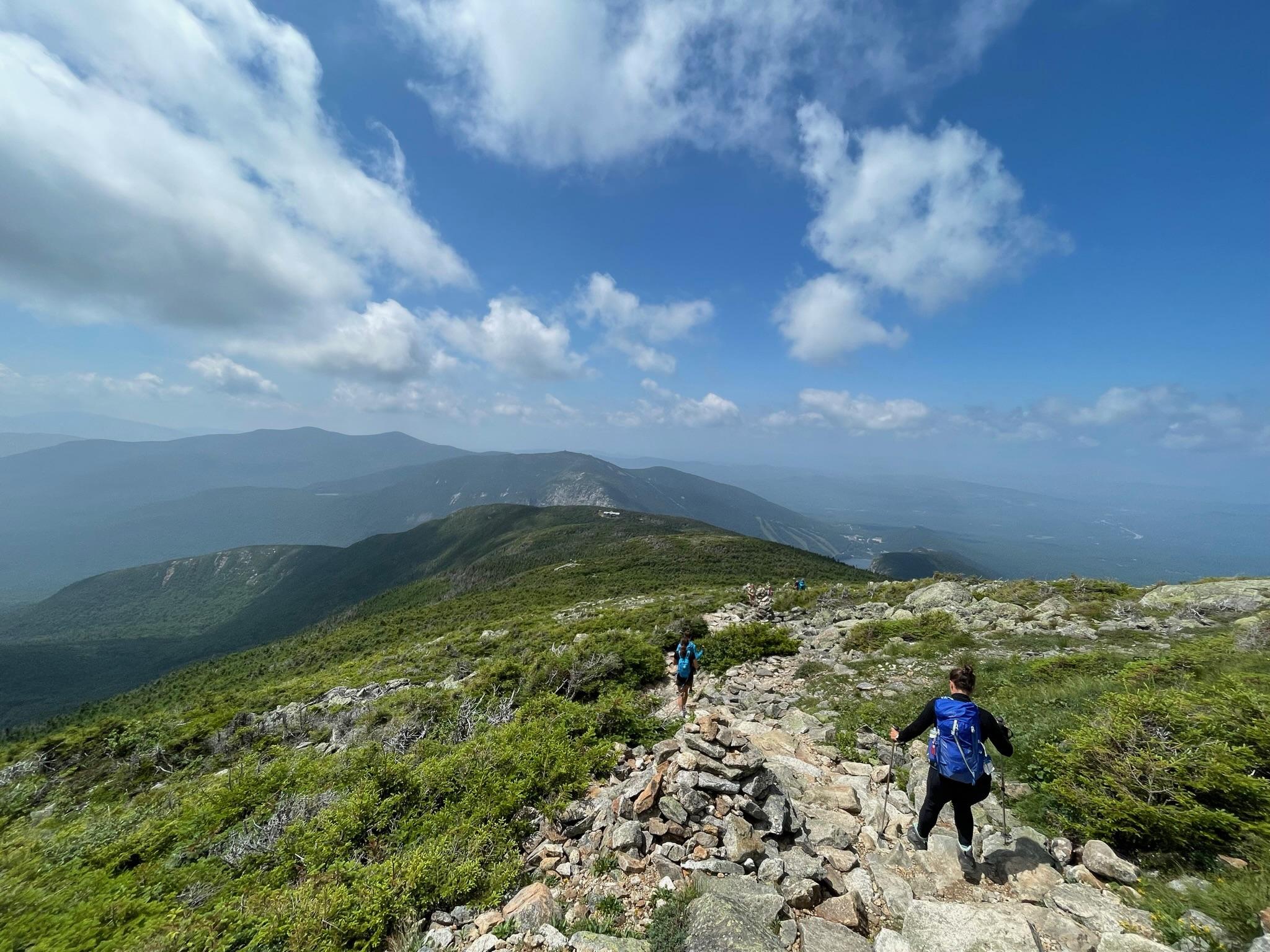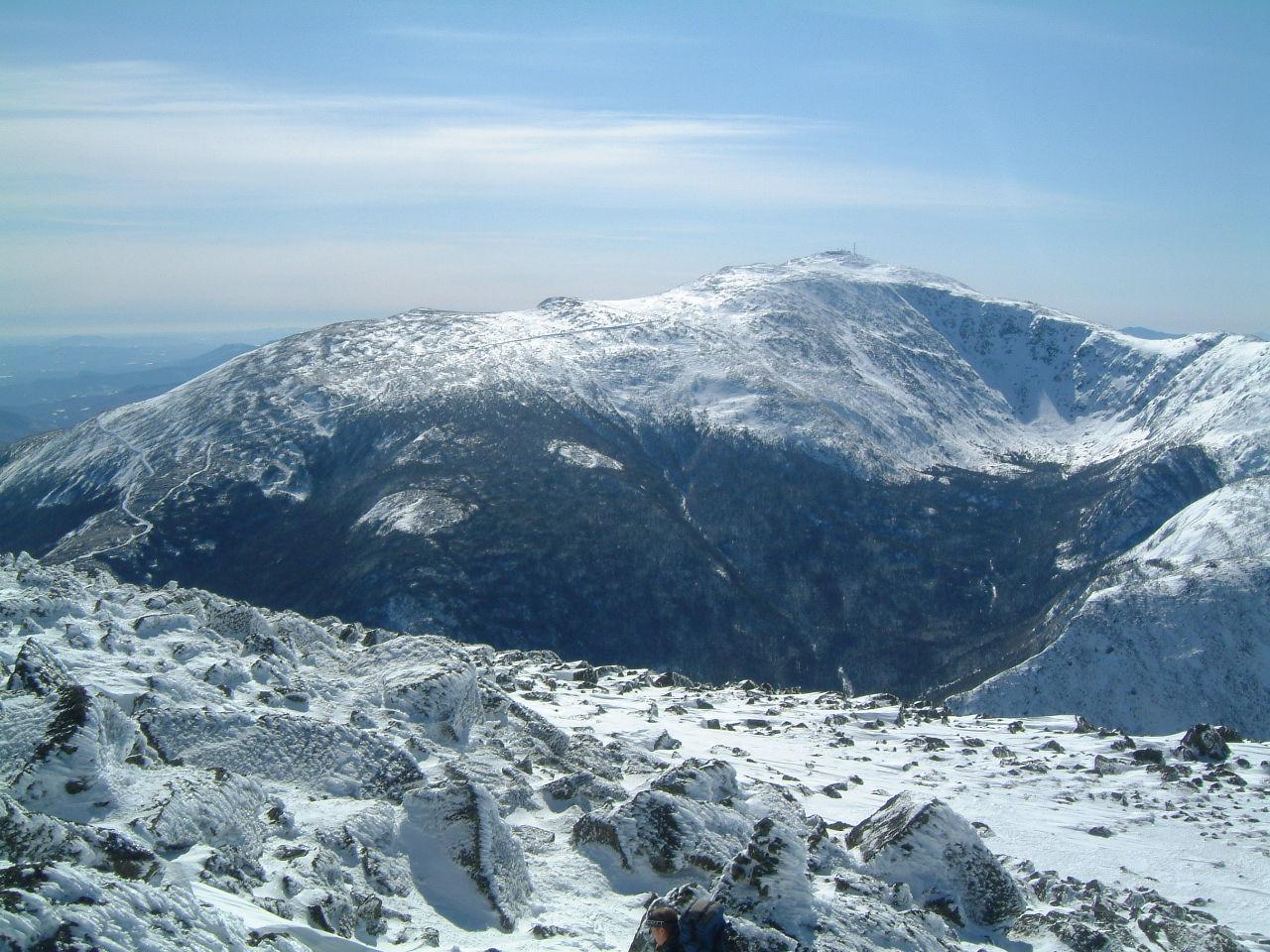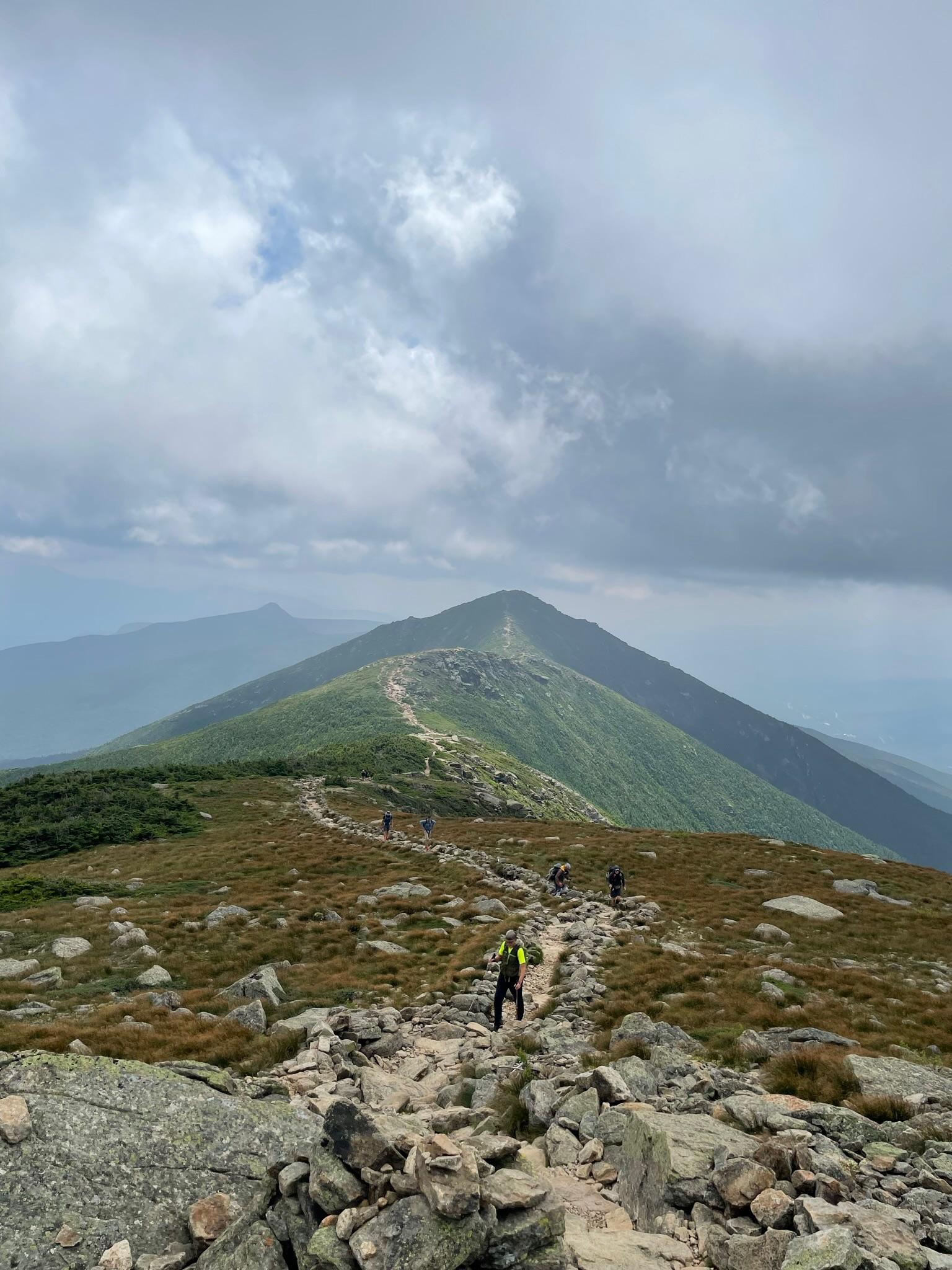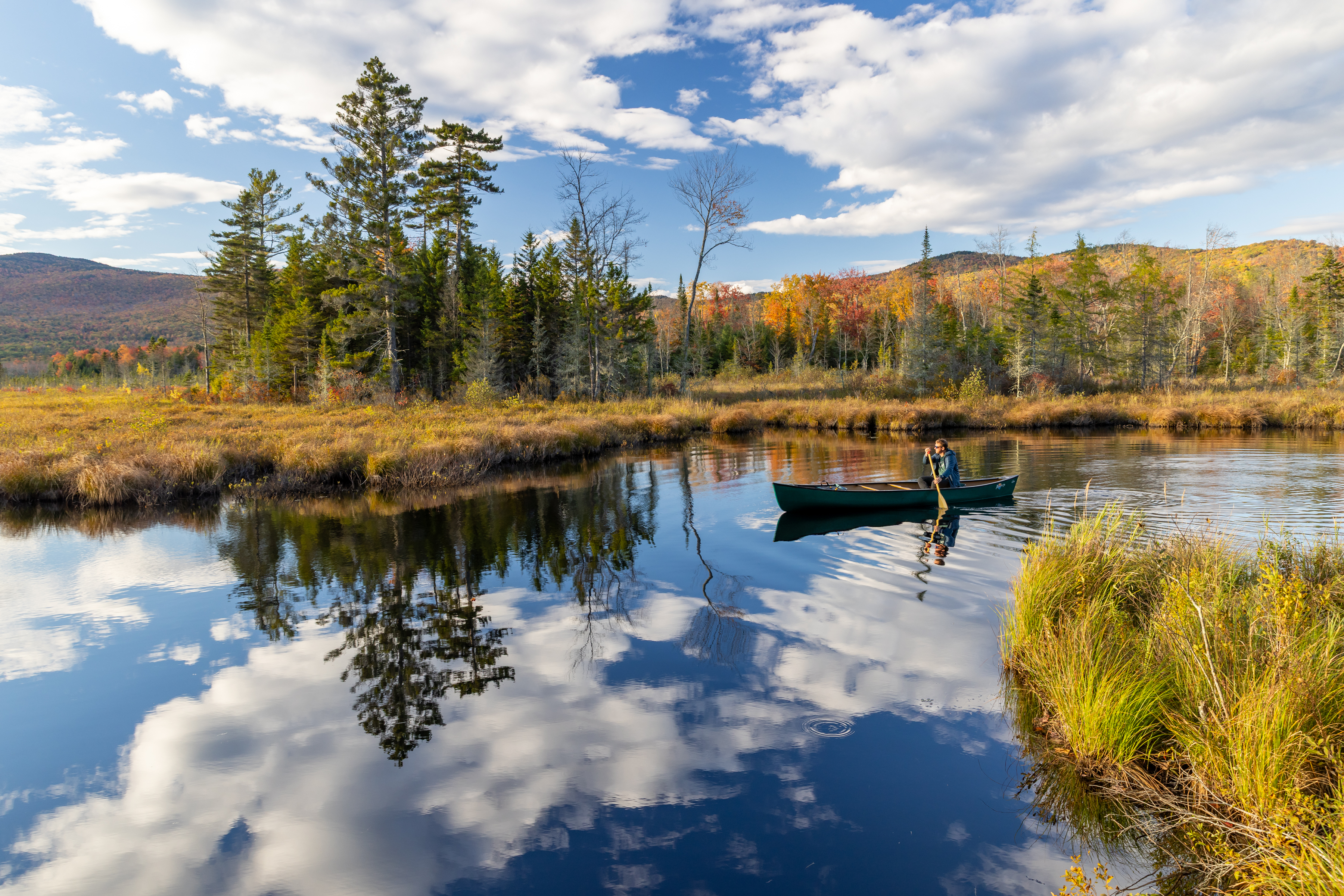- Tags:
- Forest Journal,
- Wildlife,
- Climate

Photo: William Oehler
Whenever my father came to visit me at the University of Vermont where I went to college, he would insist on hiking Mount Mansfield. As a family of hikers, I knew why he was jazzed about going on a mountain adventure, as a lover of less traveled trails, I wondered why it simply had to be one of the more popular destinations in the state.
His answer: “I need to be in the alpine zone.”
The alpine zone is one of the rarest ecosystems in the Northeast, making up less than 1% of the landscape. New Hampshire makes up for a vast majority of that percentage, with less than 12 square miles of our highest peaks offering alpine populations.
Alpine zones are glimpses into our prehistoric pasts, representing what the Northeast landscapes might have looked like 12,000 years ago, post-glacial melt. They feature some of the rarest and hardiest plant communities in our biome. They face some of the harshest conditions and yet promise some of the richest biodiversity in the state. For these reasons, alpine zones are a major attraction for hikers, botanists, naturalists, and lovers of all things nature, including my father.
In the Northeast, alpine zones are defined by their elevation — at least 4,000 ft above sea level — and a lack of tree growth caused by low temperatures, but more predominantly, high wind speeds caused by the movement of weather around mountain summits.
“Wind is one of the main reasons why trees can’t grow all the way to the summit,” says Georgia Murray, a staff scientist for the Appalachian Mountain Club, “that exposure, combined with winter precipitation and rime ice development, causes the mechanical breaking of trees which is why you’ll commonly see crooked and ragged looking trees nearer to the tops of mountains.”

Alpine zone communities are also prone to increased weather due to the build up of clouds and moisture that accumulate at the summits of mountains. That, coupled with soil that is low in nutrients (organic materials break down slower in cold environments) and high in acidity, there isn’t much that can grow in the alpine zone.
The plants that can have developed a vast array of strategies to cope with the less than ideal conditions around them.
To grow on these windswept summits, plants grow close to the ground in aerodynamic structures that reduce interaction with the tumultuous air around them. Not only does this protect them from constant buffeting, it also allows them to retain heat and moisture stolen by the raging wind.
Additionally, many plants employ biological barriers including hairy undersides and waxy coatings of their leaves. Acting like a blanket, these coatings trap heat inside the plants appendages and help prevent the plant from expending unnecessary energy to maintain homeostasis.
“In the winter, Diapensia laponica, or pincushion plant, turns its leaves red. It no longer needs to photosynthesize so it pulls in its chlorophyll to reserve energy that it needs to stay warm,” says Georgia Murray, “Plus, the darker color allows it to absorb heat from the sun.”
Many of these plants have not only adapted to these colder, harsher climates, they depend on them. Plants such as Labrador tea, mountain cranberry and certain lichen species form “snowbank communities,” pockets of plants that thrive in niches that hold onto snow longer than other parts of the mountain, saturating the ground with moisture further into the growing season.
Because of their ability to survive even the harshest conditions, the plants of the alpine zone have become a point of interest for scientists.
In their upcoming research, Stephen Keller, associate professor of plant biology at UVM, and Jacquelyn Gill, professor of paleoecology and plant ecology at UMaine, will take an in depth look into the genetics and genomics, the study of genetics scaled up to look at the variation of genetics across the entire genome, of the natural communities that make their homes in the alpine zone.
“We wanted to answer the question of, under climate change, what’s the vulnerability of the plant biodiversity that occurs on these alpine summits,” says Keller, “How can we better understand these habitats’ ability to persist and adapt since the last glacial age and can we then integrate that understanding into recommendations for conservation managers?”
Because alpine plant communities depend so much on weather and the growing conditions it fosters, one could assume that as our winters warm, growing seasons on summits lengthen, and snow pack reduces, these already fragile appearing species might start to die out. But Keller and Gill aren’t so sure.
“After the last ice age when the glaciers melted out, there would’ve been a large warm up, so much so that a lot of these alpine species would have experienced conditions much warmer than they would be adapted to, and yet they persisted through that period,” says Keller, “It suggests that there may have been some resilience in these communities that we may not be aware of yet.”
In order to determine the true resiliency, the team will embark on a four part study of 12 mountain summits across the Northeast, from the Green Mountains in Vermont to the Whites in NH, to Mount Katahdin in Maine. Sediment cores will be taken from each summit to analyze fossilized plant materials from thousands of years ago, to determine how these ancient plants adapted to the post-glacial melt climate change. These summits will also be analyzed for their individual biodiversity and environment, as scientists determine how each microclimate could affect the plant communities that grow within them.
The team will go a step further to analyze the genomics and adaptability of six plant species that are most commonly occurring in the alpine zone, including Bigelow sedge, Three-toothed cinquefoil and Bog bilberry.
“We plan to use these plants to establish common gardens, which is when you grow plants from different locations together in a common environment which allows us to monitor and measure how the plants grow and what their physiological responses to the environment,” says Keller, “This way, we learn how these six plants from each of the twelve summits vary in their traits.”

The common gardens will be established at two elevations, one close to 4,000 feet in a typical alpine environment, and one at a lower elevation.
“The high and low elevation contrast is a substitution for climate change,” explains Keller, “By growing these high elevation plants at a lower elevation they’re going to experience a longer, warmer growing season with drier and less humid climates and less cloud and snow cover. We’ll be able to see what impact this has on their survival and growth.”
Scientists are particularly interested in alpine zone responses to climate change because of how limited their environment is. Alpine zones are known as “sky islands” because of their isolation and scarcity in the Northeast.
“They’re at the uppermost extent of their elevation zone, they’re very limited in where they can go because they’re already at the highest elevations available to them,” says Keller.”
Understanding how the alpine zone will respond to climate change will be especially important in understanding how vulnerable these rare and rich communities are.
The Appalachian Mountain Club is working on a similar project, this time utilizing citizen science to understand how alpine plants are responding to the last thirty years of climate change.
“We’re using iNaturalist, which is an app that a lot of hikers already have and use, to design our own program and protocol to study plant community changes over the last thirty years,” says Georgia Murray, the head of the citizen science project at the AMC, “We need lots of data over a long period of time to understand the environmental signals at play. With iNaturalist already in place, with years of data available, it’s the perfect way to engage the public in an important study.”
“I do think these communities are all the impacts that they are undergoing,” continues Murray, “It’s not just climate change, it’s the added pressure of people not recognizing that they me be trampling these plant communities.”
Scientists hope that by maintaining long term monitoring of the climate and plate response, a picture of this region’s adaptability and vulnerability will form.
“From a biological perspective, alpine zones are such a unique component of the biodiversity of our region,” says Stephen Keller, “but they’re also really interesting and engaging places to visit and to experience wildness. Knowing whether or not they’re as vulnerable as we think they are is an important answer to a big question.”
A version of this ran in the Manchester Union Leader on Jan. 24, 2025
